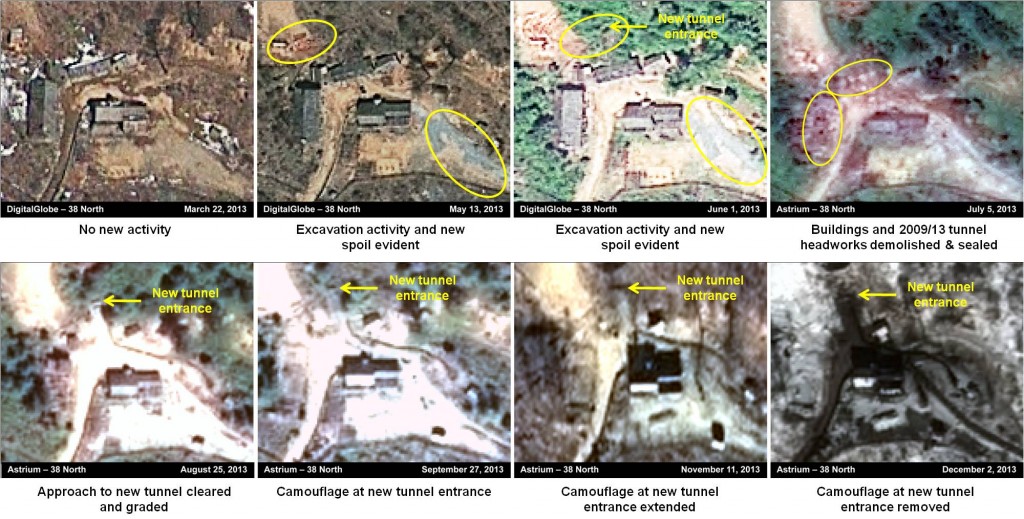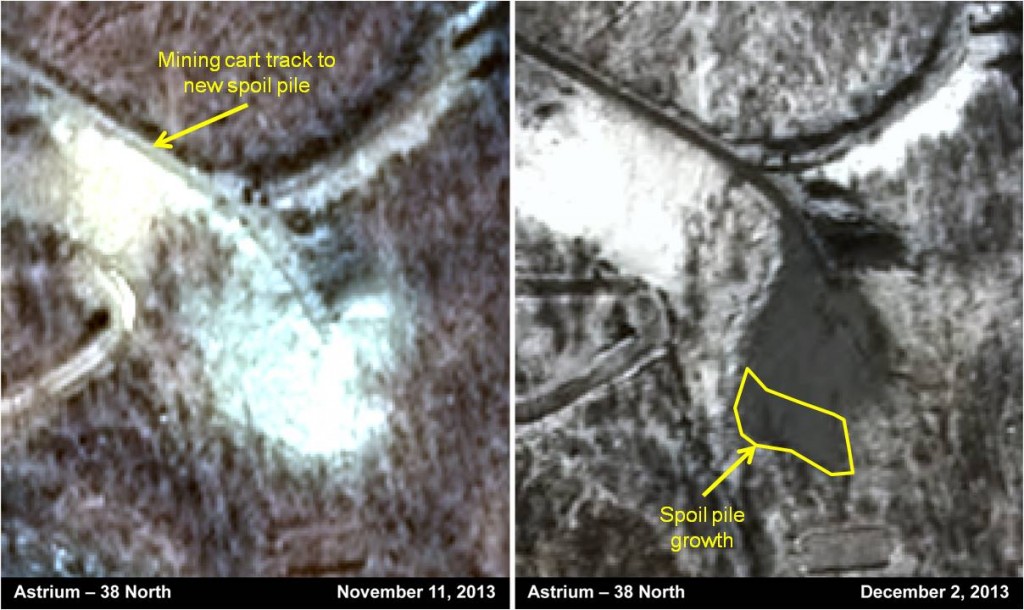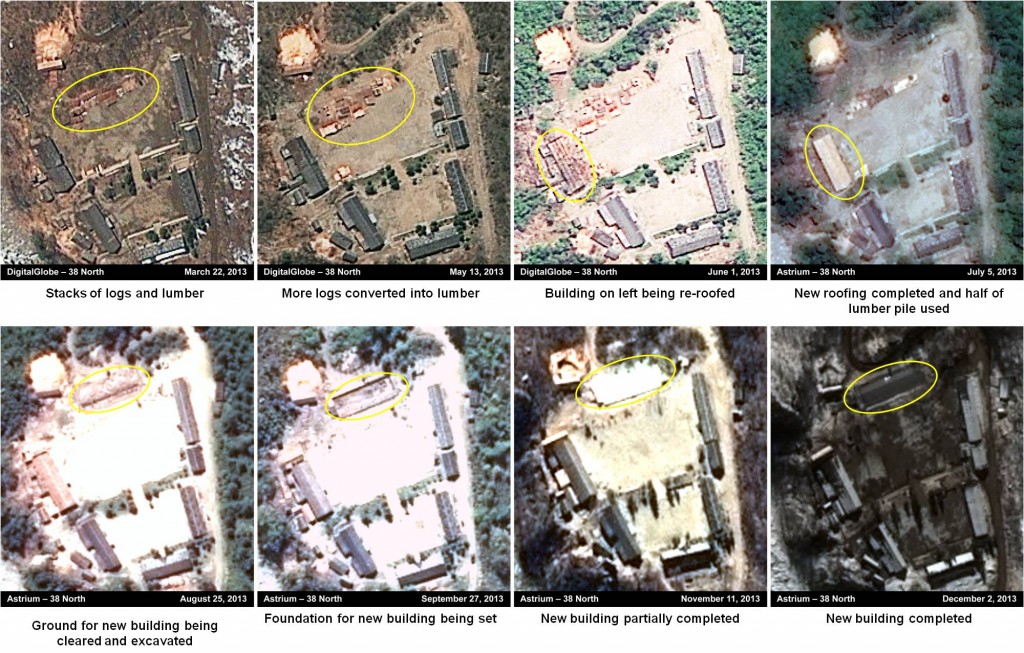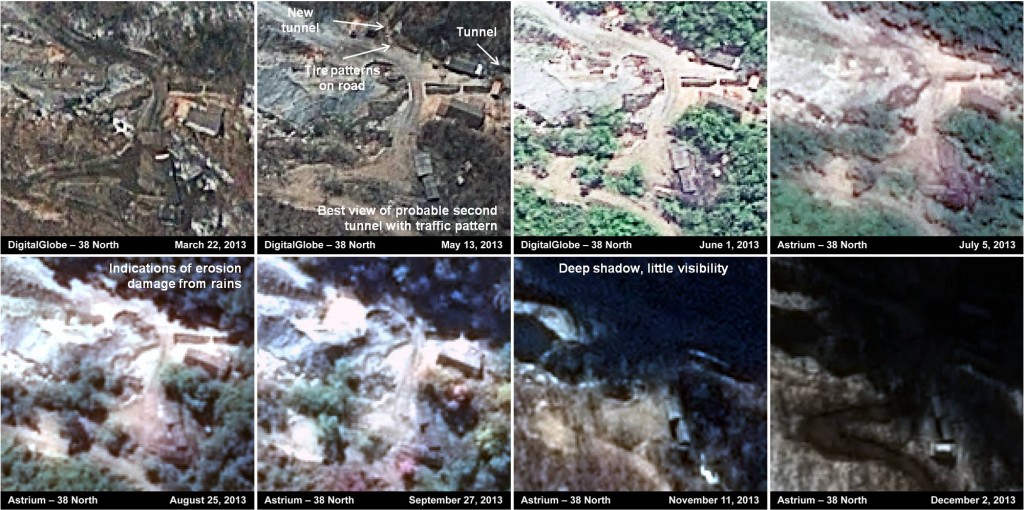North Korea’s Punggye-ri Nuclear Test Site: No Indication of Nuclear Test Preparations
Summary
While concerns that North Korea will launch provocations in the aftermath of Jang Song Thaek’s execution may be justified, recent commercial satellite imagery indicates that Pyongyang has no plan to conduct a nuclear test over at least the next few months. Through much of 2012, the site of the February 2013 nuclear test at the West Portal area was dormant. It appears that once the order to prepare for a possible test was issued, there was a spurt of activity at the site beginning in December 2012 and culminating in the February blast. As of early December 2013, there are no signs of stepped up activities at either the West or South Portal areas.
Imagery indicates that North Korea recently resumed excavation of a probable new test tunnel at the West Portal area, site of the 2009 and 2013 nuclear detonations, after a two-month hiatus. However, completion of that tunnel may take some time. There appear to be two completed test tunnels at the South Portal area that could be used for a future test if a decision is made to do so.
In the ten months since the February 2013 nuclear test, the main observable activities at the Punggye-ri site can be summarized as the following: 1) the excavation of what appears to be a new test tunnel at the West Portal area; 2) the sealing of entrances at tunnels associated with the 2009 and 2013 nuclear tests in the same area to prevent the release of radiation; 3) maintenance of the two available test tunnels at the South Portal area; and 4) substantial renovation and construction at the central support/staging area.
Figure 1. Overview of the Punggye-ri Nuclear Test Site

New Tunnel Excavation at the West Portal Area
Recent commercial satellite imagery indicates continued excavation of a probable new tunnel entrance at the West Portal area. Since this summer, imagery has shown the approach to the entrance of a new tunnel under excavation at the West Portal area as well as the sealing of tunnels associated with the 2009 and 2013 nuclear tests (figure 2). The buildings and headworks associated with tunnels used in those tests had been demolished by July 2013, and the entrances sealed and graded over to prevent the release of radiation. (Subsequent imagery shows mining car tracks running over the area where the entrances had been.) By late August, the new tunnel entrance is visible although hidden by camouflage netting in subsequent photos until reappearing in the December imagery.[1]
Figure 2. New Tunnel Excavation at the Punggye-Ri Nuclear Test Facility West Portal Area

While there had been little or no activity in this area in the months since the February test, the beginning of excavation became apparent when in mid-May, spoil was visible, poured along mining cart tracks leading to a new pile.[2] Over the next five months, the pile grew steadily. While digging paused between September and November, it commenced again in December with spoil clearly visible, dumped on top of a new snowfall.
Figure 3. New Spoil at the West Portal

As of December 2013, the volume of the pile is estimated at some 2000 cubic meters, corresponding to a 2 meter by 2 meter tunnel, 500 meters long.
Based on analysis of the excavation of the previous two tunnels at the West Portal area, this tunnel appears to be half finished. While estimates of the size of spoil piles based on satellite imagery alone are often imprecise, the pile now appears to be approximately 2000 cubic meters of rubble, suggesting that some 500 meters of new tunnel corresponding to 2 meters by 2 meters has been excavated.[3]
Figure 4. Spoil Pile Growth at the West Portal

Activities at the Central Support/Staging Area
Satellite imagery in the months since the February 2013 test indicate substantial construction and renovations of facilities in the Central Support/Staging Area, including the recent completion of a new, unidentified building. One month after the test, piles of logs and lumber appeared in the area that presumably over time were used for renovation and new structure construction. The roof on the large building to the left was replaced, and a low, partially below ground building about 30 meters long by 10 meters wide was also constructed. It appears to be a permanent structure the purpose of which remains unclear.
Figure 5. New Construction and Renovation at the Central Support/Staging Area

Activities at the South Portal Area
In contrast to the significant excavation seen in 2012, imagery since the February 2013 test shows little activity in the South Portal area. Satellite imagery from May 2013 seems to indicate the presence of a second tunnel available for a future test. Moreover, tire patterns appear on the road leading to the entrance, but there is little apparent new spoil. The tunnel may have been excavated unobserved prior to 2012 and maintained while the other tunnel in the area was dug in 2013. Indeed, past imagery indicates that a spoil pile was present in the vicinity before 2012. This second tunnel may have been maintained over the past year to be ready for if a decision is made to conduct another nuclear test.
Figure 6. Probable Second Tunnel at the South Tunnel Area

- [1]
For the February 2013 test, the camouflage netting was placed at the tunnel entrance about three months before the blast. If that pattern is observed again, then it might be one indicator of an available tunnel being prepared for an impending test.
- [2]
The spoil appears as a grayish material from the color of the granite excavated.
- [3]
Based on this estimate, the tunnel would be large enough for people to walk standing up, but not too large to minimize the amount of digging needed. It could be slightly larger, but not by much.
